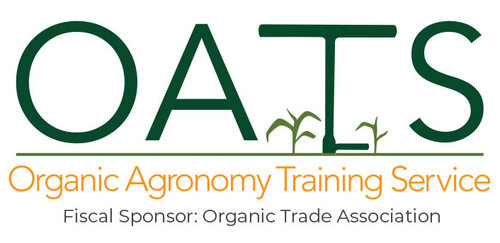Crop Insurance Options for Organic Farmers
Fact Sheet | Crop Insurance Options for Organic Farmers
CONTRACT PRICING
The USDA Risk Management Agency (RMA) sets the coverage level for organic crops. But, certified organic farmers can add the contract pricing option to their policy. This allows them to substitute their individual contracted price in place of RMA’s set crop insurance price. Contract pricing gives farmers a higher guarantee without having to increase their coverage level. Using a contracted price is one of the only ways to truly individualize crop insurance coverage for an operation. Most crops are eligible for coverage up to at least 1.5 times RMA’s certified organic price, which is based on a factor of the conventional board price.
There are some important deadlines for contract pricing:
The contract pricing option must be on the farmer’s crop insurance policy by the signup deadline for that crop (which is March 15th for spring planted crops)
The farmer’s contract must be submitted to the insurance agent by the acreage reporting deadline (July 15th for spring planted crops)
TAKE AWAY
Through contract pricing farmers can receive coverage for their crops at the price for which they have a contract.
WRITTEN AGREEMENTS
Insurance is typically unavailable for crops that are not commonly grown in a region, but organic farmers often plant crops that are unusual in their area - this is where written agreements can be helpful.
This map shows the crop insurance availability across the United States for organic oats. The green areas are regions where RMA considers oats to be a typical crop - and for those areas RMA offers traditional coverage for organic oats. If a farmer is growing oats in a non-covered area (white zones on the map), they can obtain coverage for organic oats by submitting a written agreement.
In areas where RMA does not normally offer coverage for a specific crop, a farmer can still get coverage by submitting a written agreement, which is a document requesting individual coverage for crops not insurable in that county. This process consists of putting together a package of information including:
Estimated planting and harvest dates;
Water source for irrigated fields;
Three years of crop history;
Evidence of adaptability, often as a letter provided by NRCS;
Land locations and soil maps for where the crop will be planted;
Name, location, and distance to the end market.
The farmer and crop insurance agent will work together to complete the packet of information.
Applying for written agreements is a vital step in expanding crop insurance coverage for organic farmers - because RMA first looks to see how many written agreements have been submitted for that crop in that county when they are considering whether to make insurance for that crop readily available. If none were submitted, it appears there isn’t a need for coverage. Written agreements are essential to set the stage for future insurance coverages.
TAKE AWAY
Even if it seems that insurance may not be available for a given crop, the farmer has options for coverage through written agreements.
UNINSURABLE PRACTICES
There is a stigma that crop insurance claims will be denied when a farmer follows typical organic farming practices. This couldn’t be farther from the truth! As long as farmers stick to what is in their organic systems plan (this is the main document they prepare for their organic certification) and don’t abandon the crop, a claim will not be denied. But, do be aware of two practices where farmers can lose their coverage:
Relay Cropping, otherwise known as interseeding, is a common practice within organic agriculture. RMA defines relay cropping as “a cropping practice where a second-planted crop (“relay crop”) is planted into an established crop (other than a cover crop) where the crops are planted in a manner that allows separate agronomic maintenance and harvest”. In the past, relay cropping was not recognized by the crop insurance program and farmers were not able to obtain insurance on those acres. RMA is actively reviewing
In order to insure crops as certified organic, a farmer must have their organic certificate issued by the acreage reporting deadline or provide written documentation that certification has been requested. If a copy of the written certification at the time of yield loss is still unavailable, the crops will be changed to the transitional practice instead of certified organic - this could heavily affect a farmer’s claim payment.
TAKE AWAY
Keep current on updates to the organic crop insurance program, as changes are made every year.
This material is funded in partnership by USDA, Risk Management Agency, under award number RMA22CPT0012393.






